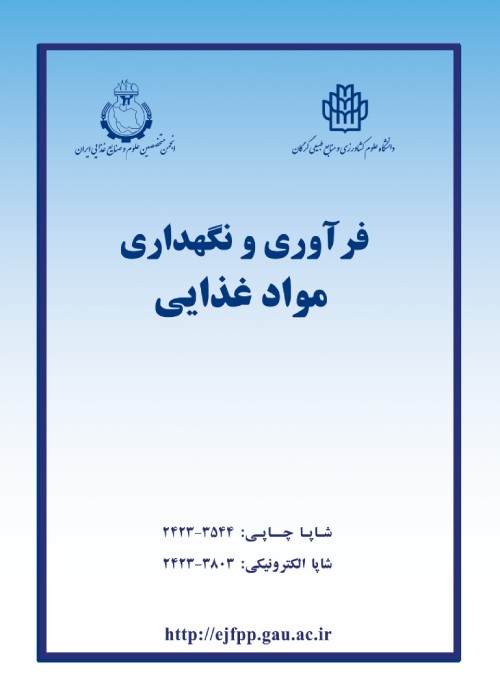Investigation of functional and antioxidant properties of faba bean protein hydrolysates using combines hydrolysis
Food is considered not only as a source of energy and essential ingredients for growth and health but also as a source of bioactive compounds that can have beneficial effects in humans. Bioactive peptides are considered to be functional compounds that have been recognized in foods recently. An enzymatic hydrolysis has been used to improve the functional properties of plant proteins. One of the features of the protein hydrolysates is their antioxidant activity, which makes it possible to use them as antioxidant agents in food models. In this study, the effect of using different enzymes and their combination in production of protein hydrolysates with high functional and antioxidant properties was investigated.
Faba bean protein isolate was enzymatically hydrolyzed by trypsin and alcalase alone, and in a successive way with trypsin and alcalase at concentrations of 1.5 and 3%, and optimum temperature of 37 and 50 °C and pH of 7 and 8.5 respectively all at the reaction time of 3h. The solubility parameters at pH 2-12, foaming and foam stability at the pH level of 4, 6, 8 and 10, DPPH radical scavenging activity, and iron chelating activity of protein hydrolysates were investigated.
The results showed that enzymatic hydrolysis increased the solubility, especially in acidic pH range. At pH 3, the protein hydrolysates derived from alcalase and the combination of trypsin and alcalase enzymes at the concentration of 3% had the highest solubility (64.51% and 60.95% respectively). Foaming capacity increased with increasing of pH from 4 to 8. The highest foaming capacity was observed at pH level of 8, but at pH level of 10, in all samples, foaming capacity decreased. Protein isolate at pH level of 4 created no foam after 60 minutes. The highest foam stability was observed at pH level of 8 in all samples. The results also showed that hydrolysis of faba bean protein significantly increased the foaming stability (p < 0.05). At pH level of 8, samples that hydrolyzed with trypsin and combination of trypsin-alcalase enzymes at the concentration of 3% had the highest foam stability. The enzymatic hydrolysis significantly increased the DPPH radical scavenging activity (p < 0.05). Maximum DPPH radical scavenging activity was observed in the alcalase treated hydrolysates (75.71%), which had a significant difference with other protein hydrolysates (p < 0.05). There was no significant difference in the DPPH radical scavenging activity of trypsin treated protein hydrolysates, and trypsin-alcalase combinations with concentrations of 1.5 and 3% which were 72.54, 73.66 and 73.62% respectively (P>0.05). The enzymatic hydrolysis significantly increased the iron chelating activity compared to the faba bean protein isolate (P <0.05).
The results showed that different enzymes under constant hydrolysis conditions have different effects on a single substrate. Enzymatic modification of proteins creates a natural antioxidant source in food models, which can increase the shelf life of products.
- حق عضویت دریافتی صرف حمایت از نشریات عضو و نگهداری، تکمیل و توسعه مگیران میشود.
- پرداخت حق اشتراک و دانلود مقالات اجازه بازنشر آن در سایر رسانههای چاپی و دیجیتال را به کاربر نمیدهد.



